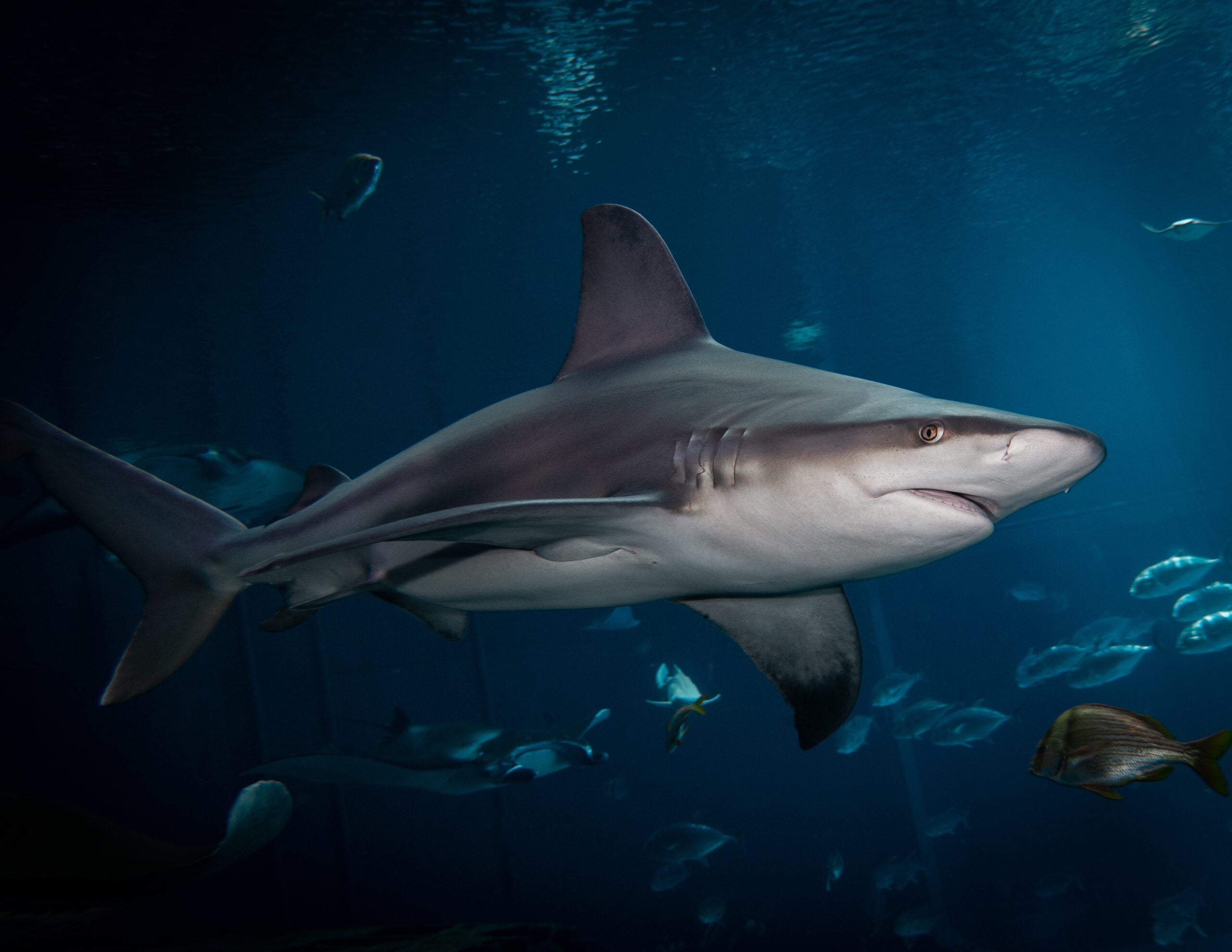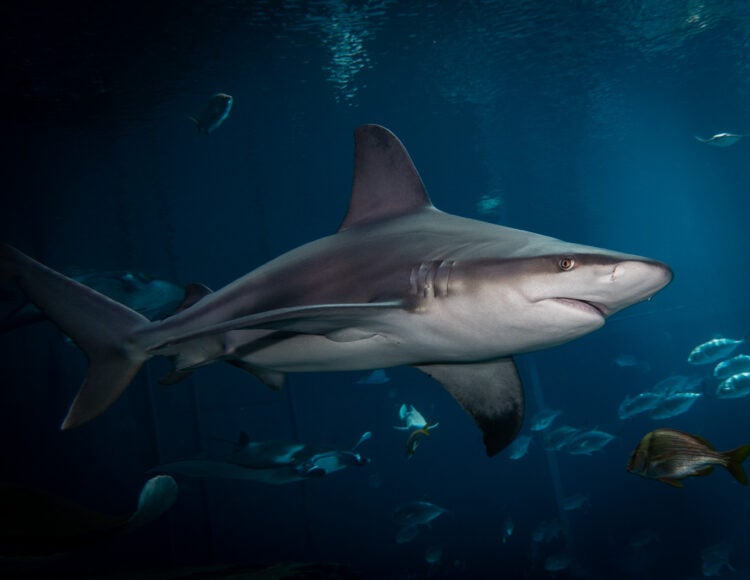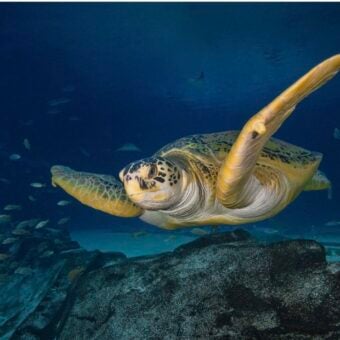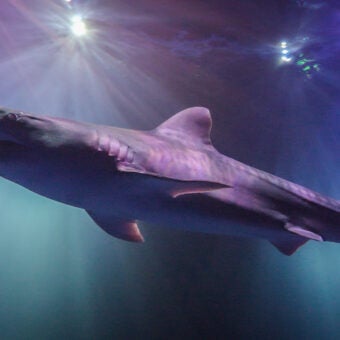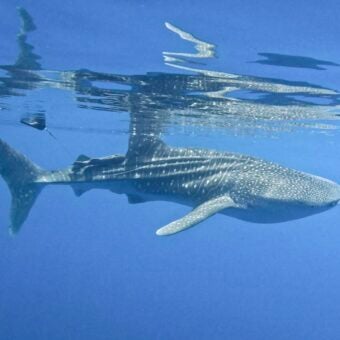New Global Study Finds Unprecedented Shark and Ray Extinction Risk
France, Marseille, 6th September 2021: A new analysis published today in the journal Current Biology finds that one-third of the world’s chondrichthyan fishes – sharks, rays, and chimaeras – are now threatened with extinction according to the International Union for Conservation of Nature (IUCN) Red List criteria. A team of experts from around the world assessed 1,199 species and classified 391 (twice as many as in the 2014 assessment) in the IUCN threatened categories of Critically Endangered (90 species), Endangered (121 species), or Vulnerable (180 species). Rays are the most threatened of the three chondrichthyan fish groups (41% of 611 species). About 36% of 536 shark species and 9% of 52 chimaera species are threatened.
“On one hand, we’re pleased that chondrichthyan science contributions have doubled since our first global analysis of this kind, allowing us to assess the status of many more species with greater confidence,” said Dr. Nicholas Dulvy, Professor at Simon Fraser University. “On the other hand, our study reveals an increasingly grim reality, with these species now making up one of the most threatened vertebrate lineages, second only to the amphibians in the risks they face. The widespread depletion of these fishes, particularly sharks and rays, jeopardizes the health of entire ocean ecosystems and food security for many nations around the globe.”
The study documents disproportionately high levels of threat for sharks and rays in tropical and subtropical coastal waters, where more than three-quarters of species are threatened. Three such species are now, for the first time, considered “possibly extinct”. The Java Stingaree and Red Sea Torpedo Ray have not been reported for well over a century. The South China Sea’s Lost Shark has not been seen since 1934.
“The tropics host incredible shark and ray diversity, but too many of these inherently vulnerable species have been heavily fished for more than a century by a wide range of fisheries that remain poorly managed, despite countless commitments to improve,” said Dr. Colin Simpfendorfer, Adjunct Professor at James Cook University. “As a result, we fear we will soon confirm that one or more of these species has been driven to extinction from overfishing, a deeply troubling first for marine fishes. We will work to make this study a turning point in efforts to prevent any more irreversible losses and secure long-term sustainability.”
Chondrichthyans are exceptionally susceptible to overfishing because they tend to grow slowly and produce few young. At particular risk are the sharks and rays, sought for meat, leather, oil, fins, gill plates, and recreation (fishing and diving). Overfishing of these species has outpaced effective resource management. Governments have fallen far short in heeding scientific advice, fulfilling treaty obligations to end unsustainable exploitation, protecting important habitats, and prioritizing protections for chondrichthyan species. The top four most imperiled chondrichthyan families are the sawfishes, giant guitarfishes, devil rays, and pelagic eagle rays, with 100% of species listed as threatened.

“Our analysis is alarming and yet offers some hope.
“Our analysis is alarming and yet offers some hope,” said Sonja Fordham, president of Shark Advocates International, a project of The Ocean Foundation. “We document significant rebuilding for several species of heavily fished skates, achieved through science-based limits. We have the frameworks, tools, and commitments to replicate this success across the globe, but time is running out for more and more shark and ray species. We urgently need governments, encouraged by citizens, to follow through with strict limits on unsustainable fishing and finally turn the tide for these extraordinary animals.”
Notes to Editors: The study was completed by the Global Shark Trends Project (GSTP), a collaboration of the IUCN Shark Specialist Group, Simon Fraser University, James Cook University, and the Georgia Aquarium established with support from the Shark Conservation Fund to assess the extinction risk for chondrichthyan fishes (sharks, rays, and chimaeras). The team engaged 322 experts from around the world to complete the 8-year long analysis. The analysis classifies 391 of 1,199 chondrichthyan species (32.6%) as threatened, according to IUCN Red List criteria. That statistic increases to more than one-third (37.5%) if Data Deficient species are assumed to be threatened in the same proportion as assessed species.
The IUCN Red List website uses the higher value to convey global extinction risk. Chondrichthyans make up the oldest and largest evolutionary radiation of vertebrates and one of the three taxonomic Classes of fishes. Class Chondrichthyes comprises three main lineages: sharks, and rays, and chimaeras(a relatively small group of mainly deepwater species). Starting in the 1990s, sharks and rays have been increasingly addressed through Regional Fisheries Management Organizations and international wildlife treaties, particularly the Convention on International Trade in Endangered Species. Through various associated actions aimed primarily at ending overexploitation of threatened species, member governments are obligated to restrict fishing and/or exports to sustainable levels, but the record for fulfilling these commitments has to date been generally poor.
This article was published on: September 8, 2021
Georgia Aquarium is one of the largest aquariums in the world with more than 11 million gallons of water and tens of thousands of animals. Located in Atlanta, Ga., it is a premier animal care and research facility that is accredited by the Association of Zoos and Aquarium, the Alliance of Marine Mammal Parks and Attractions, Humane Certified by American Humane, and a Class R research institution certified by the USDA. By providing guests with unparalleled opportunities to learn about marine life, Georgia Aquarium is dedicated to unlocking the ocean’s wonder for all, providing transformative experiences that inspire a shared responsibility for conserving our aquatic ecosystems.
